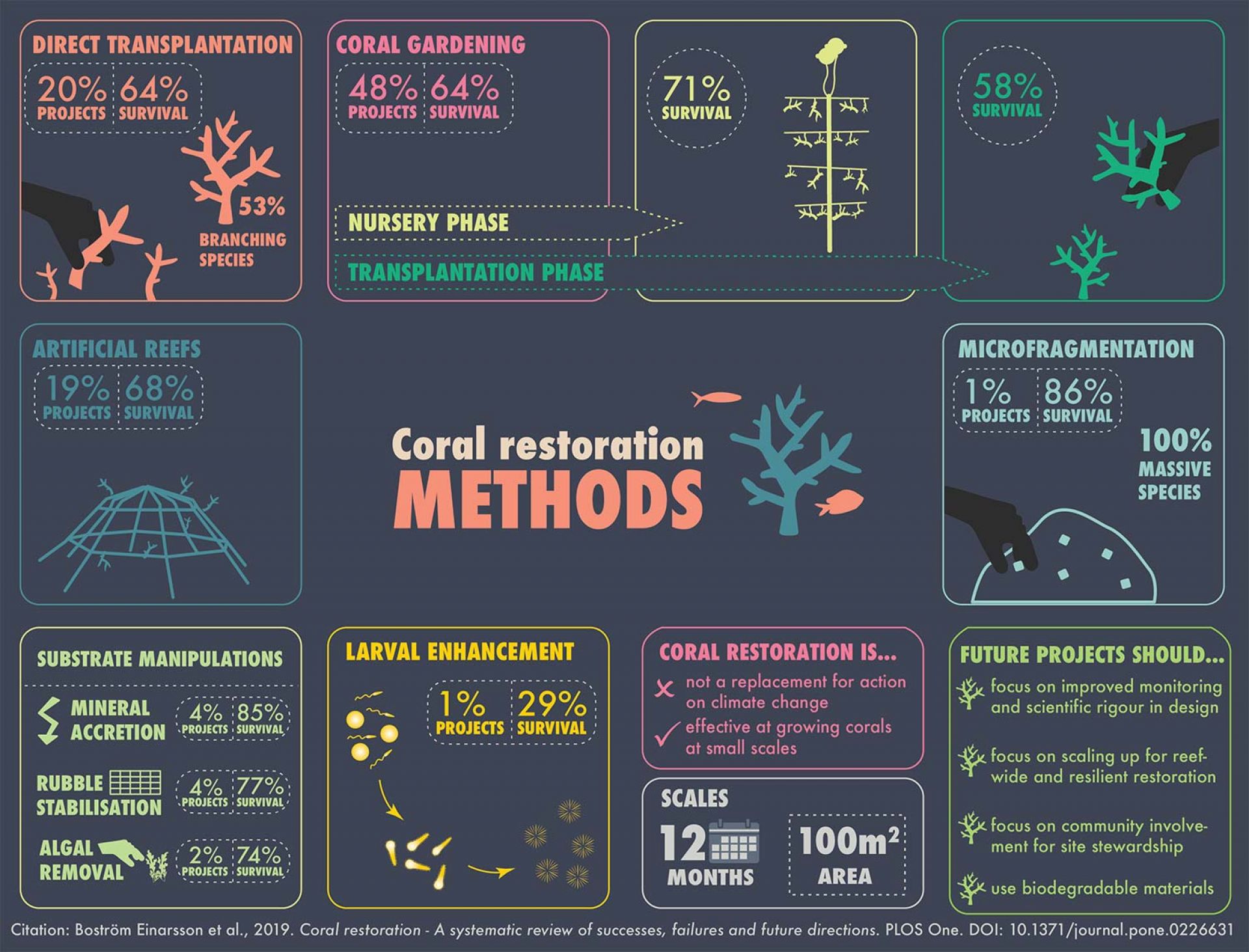Media Releases
New global database to guide coral restoration

James Cook University researchers say a massive new research database will help experts make better decisions about the restoration of coral reefs.
“It’s critical to learn from past mistakes and adapt methods and techniques, to ensure more effective and science-based restoration,” said lead author Dr Lisa Boström Einarsson, from JCU’s Centre for Tropical Water and Aquatic Ecosystem Research (TropWATER).
Attempts to restore coral reefs have been controversial, but the popularity of coral restoration projects has been growing in recent decades, in response to growing threats to reefs worldwide.
“Until now it has been difficult for managers, practitioners and researchers to get an overview of global restoration projects, and to assess what methods and techniques may be most suitable for their area and reef type,” said Dr Boström-Einarsson.
Coral restoration projects typically focus on reintroducing coral to areas where coral reefs are degraded or lost. Common strategies include attaching small fragments of coral, reintroducing baby coral, or stabilising the material coral grows on.
Dr Boström-Einarsson was part of an international team of scientists that looked at 362 case studies on active coral restoration spanning four decades in 56 countries. The researchers developed a database to document case studies of coral restoration from around the world.
Dr Boström-Einarsson said on average, survival in restored corals was relatively high, between 60 and 70 per cent, demonstrating that it was possible to successfully grow corals at smaller scales.
The researchers were surprised at the diversity of corals included in the data set, with over 200 different species of corals studied.
“It was important to us that the data we collected be widely available to managers and practitioners as well as coral reef researchers,” said Dr Boström Einarsson. “So we developed an interactive tool to explore the database and made the data and the review available online.”
The research team also identified common issues in programs around the world.
“We found a lack of clear and achievable objectives or appropriate, standardised monitoring and reporting of active restoration projects, along with many projects that were poorly designed in relation to their stated objectives,” said Dr Boström-Einarsson.
Dr Ian McLeod, a Principal Research Scientist at TropWATER, said almost half of the projects did not evaluate any metrics relevant to judging their success.
“The case studies were dominated by short-term projects, with a median monitoring period of 12 months: far less than the length of time required for a reef to form,” said Dr McLeod.
Dr McLeod said critics of coral restoration argued it detracted focus from mitigating climate change and other threats to the marine environment and was pointless unless it could restore reefs at the ecosystem scale, but ‘recent research has shown that optimal conservation outcomes should include both habitat protection and restoration’.
“Restoration is a common and accepted practice for wetlands and shellfish reefs,” he said. “For it to be effective, the trick is to choose methods that match your objectives and set aside funding for appropriate monitoring and adaptive management”.
Dr Boström-Einarsson said it was critical not to view restoration as a replacement for meaningful action on climate change.
“The increased frequency, intensity and severity of mass coral bleaching is diminishing the time and capacity for recovery between events,” she said. “Well-designed and managed restoration projects have an important role to play, but there is only so much they can do if radical action on the climate is not taken almost immediately.”
An interactive database of the report can be found here.
This project was jointly funded by the Australian Government through the Reef Restoration and Adaptation Program (GBRrestoration.org) and the National Environmental Science Program.